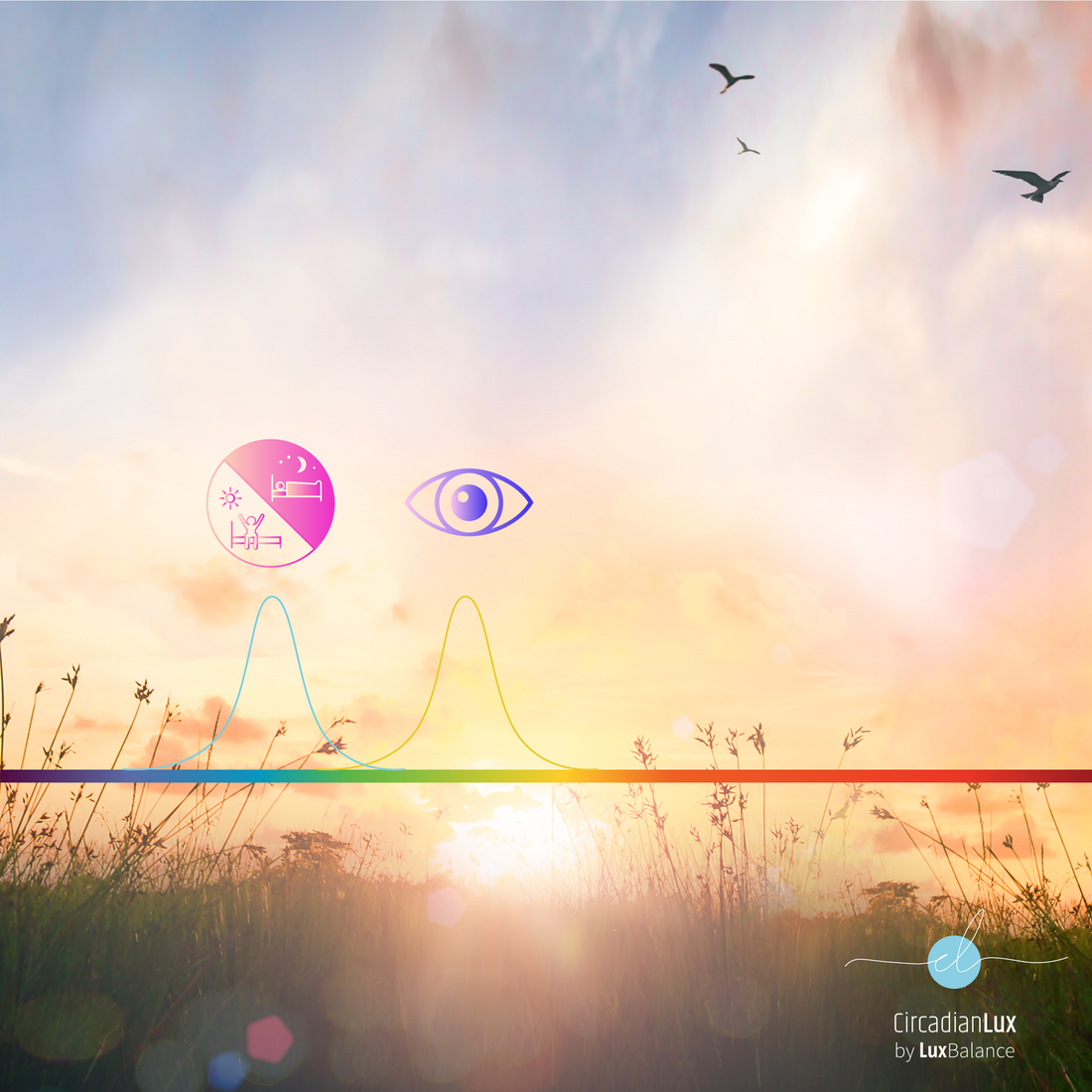
Circadian light and Visual light explained
Share
The light enters through the eye and it signals to our brain and body important information, so we know the right time to sleep or to be awake. The right light at the right time influences the natural production of melatonin ('sleep hormone') in the human body or the production of cortisol (for focus, alertness). With the use of electric lighting, the human body receives much less natural daylight. Normal lighting mainly focuses on the visual or functional side of light. Circadian lighting adds health and wellbeing specifications to light.

The Circadian receptor in the human eye is especially sensitive to light around 480 nanometers. This is often referred to as blue light. Blue light ranges from 400nanometers to 500nanometers. There is a bit of blue in every white light source. This is because white light consists of Red Green and Blue, with the human eye being especially sensitive to Blue and Green. The visual receptor in the human eye is especially sensitive to light around 550nm. This is the green part. Lighting technology is still mainly optimized to support visual function.
At CircadianLux we strive to make lighting that supports both visual tasks and also has a positive impact on people's health and well-being. The right circadian light gives you more energy during the day and help you to sleep better at night. Sounds like a nice dream right?

